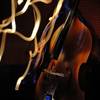Italian Jazz: Trumpet the Queen
A few articles ago, we took a look at the birth of the sax and its use in jazz; were we to build a hierarchy we might dub it the king of jazz instruments. No doubt the trumpet would be queen. With its imperious timber that demands your immediate attention and absolute devotion, the trumpet has been fundamental to jazz since the genre got going.
Back in the 1920s, Louis Armstrong took it to unthinkable levels of refinement; since then, its reputation for grandiosity in the world of popular music has remained unaltered. Alongside the trumpet there are two similar instruments that should be considered which amateurs often get mixed up.
The first is the cornet, which has a sharper timber and a more compact shape than its big sister; the other is the flugelhorn, which is more unwieldy and carries a sound that is more somber, darker, melancholic. If the cornet had its heyday in the ‘20s and ‘30s (Armstrong made ample use of it), today it’s the flugelhorn that is more ubiquitous in contemporary jazz.
In fact, it’s easy to see trumpet players alternate between the two in big bands and small. It’s impossible to cover the history and evolution of the jazz trumpet in such a small space; suffice it to say that its role in the development of musical styles has been utterly fundamental. Besides Armstrong, the list of names of people who’ve played it would be familiar to even the greenest of jazz fans. Just think of Miles Davis, Dizzy Gillespie and Wynton Marsalis.
Each has left an indelible notch on the jazz family tree. We should also point out a few Italian trumpet players who have no reason to envy today’s major players. Three in particular are highly active and extremely gifted: Enrico Rava, Paolo Fresu and Fabrizio Bosso.
Each musician, from the oldest (Rava) to the youngest (Bosso), has a particular style that an attentive listener can pick out. The former, for example, has since the ‘60s distinguished himself for his endless appeal to seek out new sonorities, in time coming to prefer refined and melancholic tones, and earning a reputation as one of the greatest stylists in the world. Paolo Fresu has followed a path very similar to Miles Davis’ in the ‘50s and ‘60s; his sound is mellow, sweet, refined.
He is also an absolute master of the flugelhorn, almost without parallel among contemporary musicians. Fabrizio Bosso, on the other hand, impresses for his technical abilities and improvisational skills. His approach to the trumpet is explosive and volatile—he’s a truly astonishing musician who can find his rhythm no matter the musical context.
Italian jazz has plenty of reason to be proud of these three greats: they are creative, intelligent musicians who possess uncanny styles. Through them and a few others, our jazz has attained a high caliber of artistry and professionalism. They have definitely contributed to turning a page in the big book of jazz.





































i-Italy
Facebook
Google+
This work may not be reproduced, in whole or in part, without prior written permission.
Questo lavoro non può essere riprodotto, in tutto o in parte, senza permesso scritto.